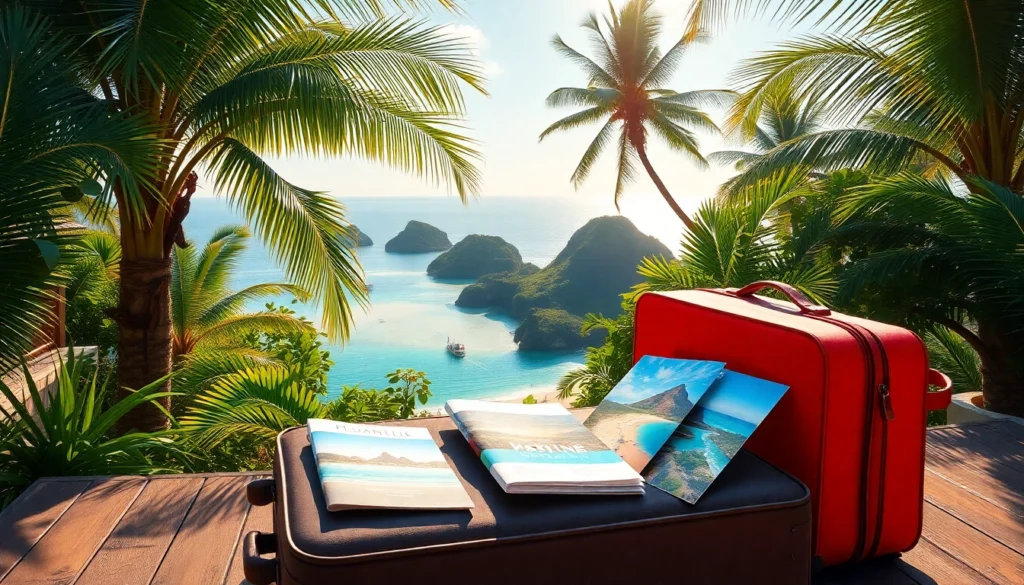Introduction to Lombok and Its Unique Appeal
Nestled within the Indonesian archipelago, Lombok stands out as a captivating destination that seamlessly combines pristine natural landscapes, vibrant cultural heritage, and modern tourism appeal. Often overshadowed by its neighbor Bali, Lombok offers a more tranquil yet equally mesmerizing experience for travelers seeking authenticity and adventure. With a population of over 4 million residents as of early 2025, the island embodies a dynamic blend of tradition and contemporary life, making it a compelling choice for cultural enthusiasts, nature lovers, and thrill-seekers alike.
Its strategic location in West Nusa Tenggara provides access to some of Indonesia’s most iconic sights and natural wonders. From towering volcanic peaks to crystal-clear beaches, Lombok boasts an array of attractions that cater to diverse interests. This comprehensive guide explores the rich geography, history, cultural heritage, and top attractions that make Lombok a must-visit paradise in Southeast Asia.
Top Natural Attractions in Lombok
Gunung Rinjani: Indonesia’s Second Highest Volcano
At the heart of Lombok rises Gunung Rinjani, a majestic stratovolcano standing at 3,726 meters above sea level. As the second-highest volcano in Indonesia, Rinjani is a magnet for adventure travelers and mountaineers. Its caldera, Lake Segara Anak, adds to the volcano’s mystique, presenting an otherworldly landscape that attracts thousands of trekkers annually.
Climbing Rinjani is a challenging yet rewarding experience, offering panoramic views of the island, lush forests, and diverse wildlife. Trekking routes vary from two to four days, with each phase presenting unique scenic vistas and ecosystems. Proper preparation, including acclimatization and proper gear, is essential for a safe ascent. Guided tours are recommended to ensure safety and enrich the experience with insights into local flora, fauna, and volcanic history.
Stunning Beaches and Surf Spots
Lombok’s beaches are renowned for their white sands, turquoise waters, and consistent surf breaks that attract surfers from around the world. Popular spots include Senggigi Beach, known for its vibrant nightlife and coral reefs, and Kuta Beach, renowned for its surf-friendly waves suitable for beginners and professionals alike.
Gili Trawangan, part of the Gili Islands archipelago, is famous for its lively beach scene and excellent snorkeling and diving opportunities. Tanjung Aan and Selong Belanak offer more secluded experiences with pristine sands and excellent conditions for learning to surf. These beaches also serve as perfect spots for relaxation, sunbathing, and enjoying local seafood delicacies.
Hidden Waterfalls and Nature Reserves
Beyond the beaches and volcanoes, Lombok boasts numerous hidden waterfalls and lush nature reserves that captivate eco-tourists and nature lovers. Sendang Gile and Tiu Kelep Waterfalls in Mount Rinjani National Park are among the most visited, offering invigorating hikes through dense forests and stunning cascades perfect for swimming.
Other notable sites include Benang Stokel and Benang Kelambu waterfalls, located in the northern part of the island, which provide a serene escape into tropical wilderness. These natural wonders are accessible via guided eco-tours that promote responsible tourism and environmental conservation.
Adventure and Outdoor Activities in Lombok
Hiking, Trekking, and Mountain Climbing Tips
Lombok’s rugged terrain offers numerous opportunities for outdoor adventure. For mountain climbing enthusiasts, Rinjani’s challenging ascent requires careful planning. It’s crucial to hire experienced guides, carry sufficient supplies, and acclimate properly to prevent altitude sickness. The best trekking seasons are during the dry months from May to September, when weather conditions are optimal.
Besides Rinjani, other trekking routes in the island include the Gunung Tambora, which, although less visited, offers spectacular volcanic landscapes and historical significance related to the Tambora eruption of 1815.
Snorkeling, Diving, and Marine Exploration
Lombok’s surrounding waters teeming with marine biodiversity make it a premier destination for snorkeling and diving. The Gili Islands — Gili Trawangan, Gili Air, and Gili Meno — are hotspots for underwater exploration with vibrant coral reefs and an abundance of marine life including turtles, reef sharks, and colorful fish.
Dive sites like Shark Point and Meno Wall are well-known among professional divers. Several local operators offer eco-friendly tours and certification courses, emphasizing conservation and sustainable tourism.
Ecotourism and Community-Based Tours
Embracing eco-friendly initiatives, many local communities now offer sustainable tourism options, including homestays, cultural workshops, and conservation projects. These experiences foster responsible tourism, preserve local heritage, and directly benefit indigenous populations.
Participating in community-based tours, such as traditional weaving, farming, or fishing experiences, helps travelers gain authentic insight into Lombok’s rural life while supporting local economies.
Experiencing Lombok’s Rich Culture and Traditions
Traditional Villages and Cultural Tours
Lombok’s cultural landscape is vibrant, with numerous traditional villages showcasing unique customs, dance, and crafts. Sade and Sukarara are well-preserved Sasak villages where visitors can observe traditional weaving, pottery, and dance performances. These villages also provide insights into the daily lives and spiritual practices of the Sasak people, the island’s dominant ethnic group.
Participating in cultural tours encourages respectful engagement, allowing visitors to learn about local rituals, architecture, and ceremonies such as Pestaban (offerings and prayers) which are integral to Lombok’s spiritual fabric.
Local Cuisine and Culinary Experiences
Food in Lombok is a delightful fusion of native ingredients and Indonesian flavors. Dishes such as Ayam Taliwang (grilled chicken with spicy sambal), Plecing Kangkung (water spinach salad), and Sate Rembiga (spiced satay) showcase the island’s culinary richness.
Food tours and cooking classes are excellent ways to immerse oneself in local gastronomy, visiting traditional markets and learning from indigenous chefs. These experiences promote culinary appreciation and support local food producers.
Festivals and Arts in Lombok
Lombok hosts numerous festivals, including the Bau Nyale Festival, where locals gather to catch sea worms believed to be the reincarnation of Princess Mandalika, symbolizing fertility and prosperity. Artistic expressions such as traditional music, dance, and handicrafts flourish across the island, especially during cultural events.
Artisans specializing in silver jewelry, woven ikat fabrics, and wood carvings offer vibrant insights into Lombok’s artistic heritage, often engaging visitors in hands-on workshops.
Practical Tips for Visiting Lombok
Best Time to Travel and Seasonal Highlights
The optimal period for visiting Lombok spans from May to September, aligning with the dry season when rainfall is minimal and visibility for outdoor activities is at its peak. During this period, the island’s landscapes are lush and vibrant, and sea conditions are ideal for surfing, diving, and snorkeling.
The shoulder months of April and October may also be suitable for travelers seeking fewer crowds, although occasional rain showers can occur. The rainy season from November to March, while lush and green, can impede outdoor pursuits, and some tours may be limited.
Travel Logistics and Accommodation Options
Lombok is accessible via flights from Bali or Jakarta, with numerous direct options to Lombok International Airport (YIA). Once on the island, transportation options include rental scooters, private drivers, and shuttle services.
Accommodation ranges from luxury resorts in Senggigi to budget hostels near Kuta Beach and eco-lodges within rural villages. Many lodgings now emphasize sustainable practices, blending comfort with environmental responsibility.
Safety, Guides, and Responsible Tourism Practices
Ensuring safety during outdoor activities is paramount. Always hire licensed guides, especially for mountain trekking or water sports, and adhere to safety protocols. Be respectful of local customs, dress modestly when visiting villages or religious sites, and seek permission before photographing residents.
To promote responsible tourism, support local artisans, choose eco-friendly tours, and minimize environmental impact by waste disposal and conserving natural resources.




